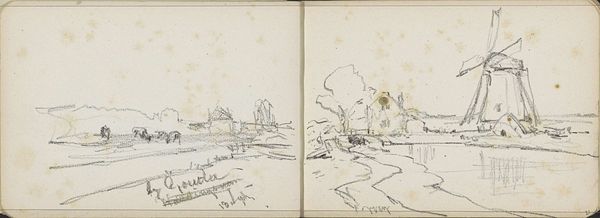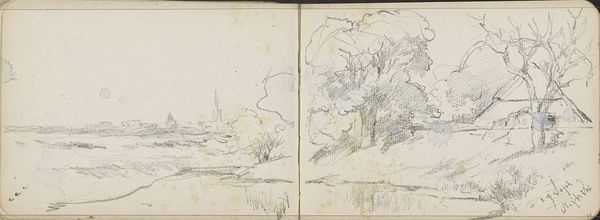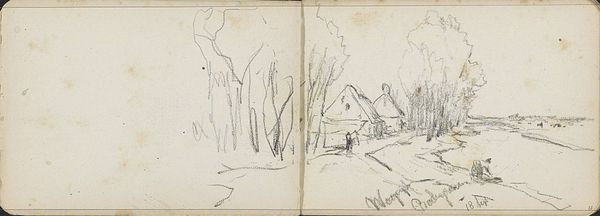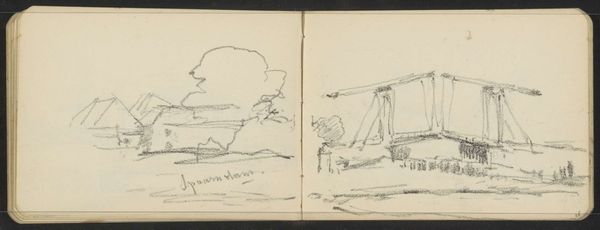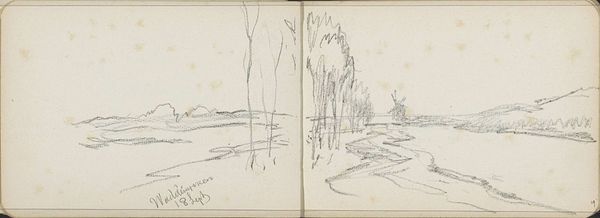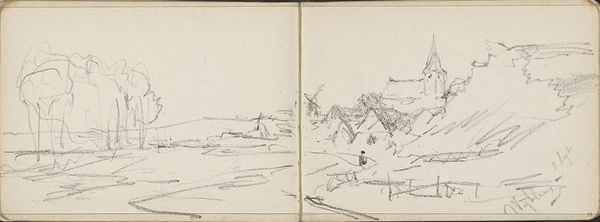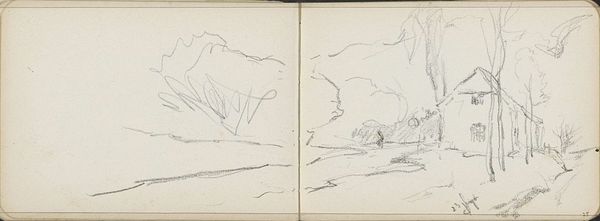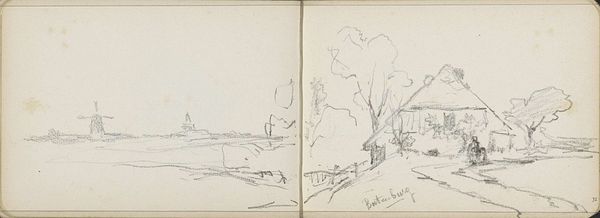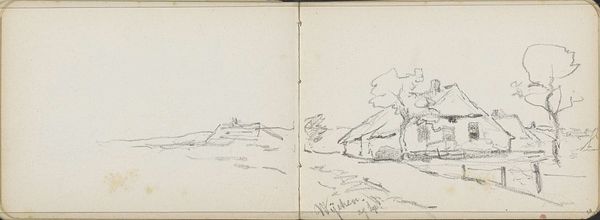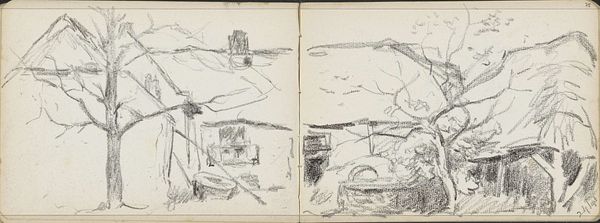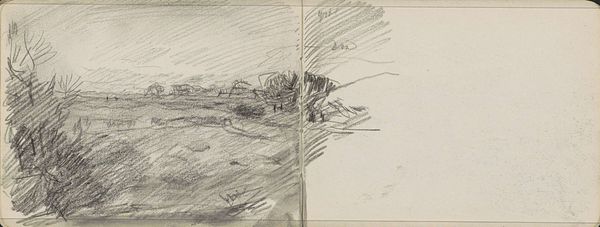
Dimensions: height 116 mm, width 162 mm
Copyright: Rijks Museum: Open Domain
Curator: Willem Cornelis Rip created this work, "Weg in een landschap," sometime between 1905 and 1909. It appears to be an ink and pencil drawing. Editor: My immediate reaction is that there is a delicate stillness to it, an understated moment. The light feels very soft, as if captured in the early morning or late afternoon. Curator: Knowing the time period, it is easy to see Rip as part of a larger movement grappling with rapid industrialization. Perhaps the rough and somewhat unfinished quality reflects a longing for the pastoral, untouched landscapes threatened by urban expansion? It would not be a far reach to associate the sketch with eco-critical and environmental anxieties. Editor: Or perhaps Rip was simply taken by the subtleties of line and tonal variation! I am most intrigued by how he balances form with the ephemeral quality of light. The visible strokes communicate depth, while also disrupting a perfectly still rendition. The dual-page format creates diptych-like qualities that mirror the contrasting landscapes in each pane. Curator: I find it difficult to ignore the political implications when a landscape is involved. Whose land is he depicting, and who has access to that path? The very notion of a "road in a landscape" speaks to networks of power, trade, and exploitation that run through any environment. Editor: Well, the very lightness of touch perhaps reflects Rip’s understanding of this. The piece does not give a romantic or glorious feel; rather, its modesty mirrors a light environmental impact, not exploiting nature. I also observe a deliberate asymmetry, especially within the right-hand section, creating dynamic visual tension between the various compositional components. Curator: I suppose both of our points of view may hold space in one frame. On the one hand, the form embodies a simple moment in time, and, on the other, it embodies our connection to the past—our history of power, land, and ownership. Editor: Indeed, that tension gives the work its potency. There's a negotiation of light and shadow, form and context that, though seemingly simple, ultimately leaves us to reflect.
Comments
No comments
Be the first to comment and join the conversation on the ultimate creative platform.
